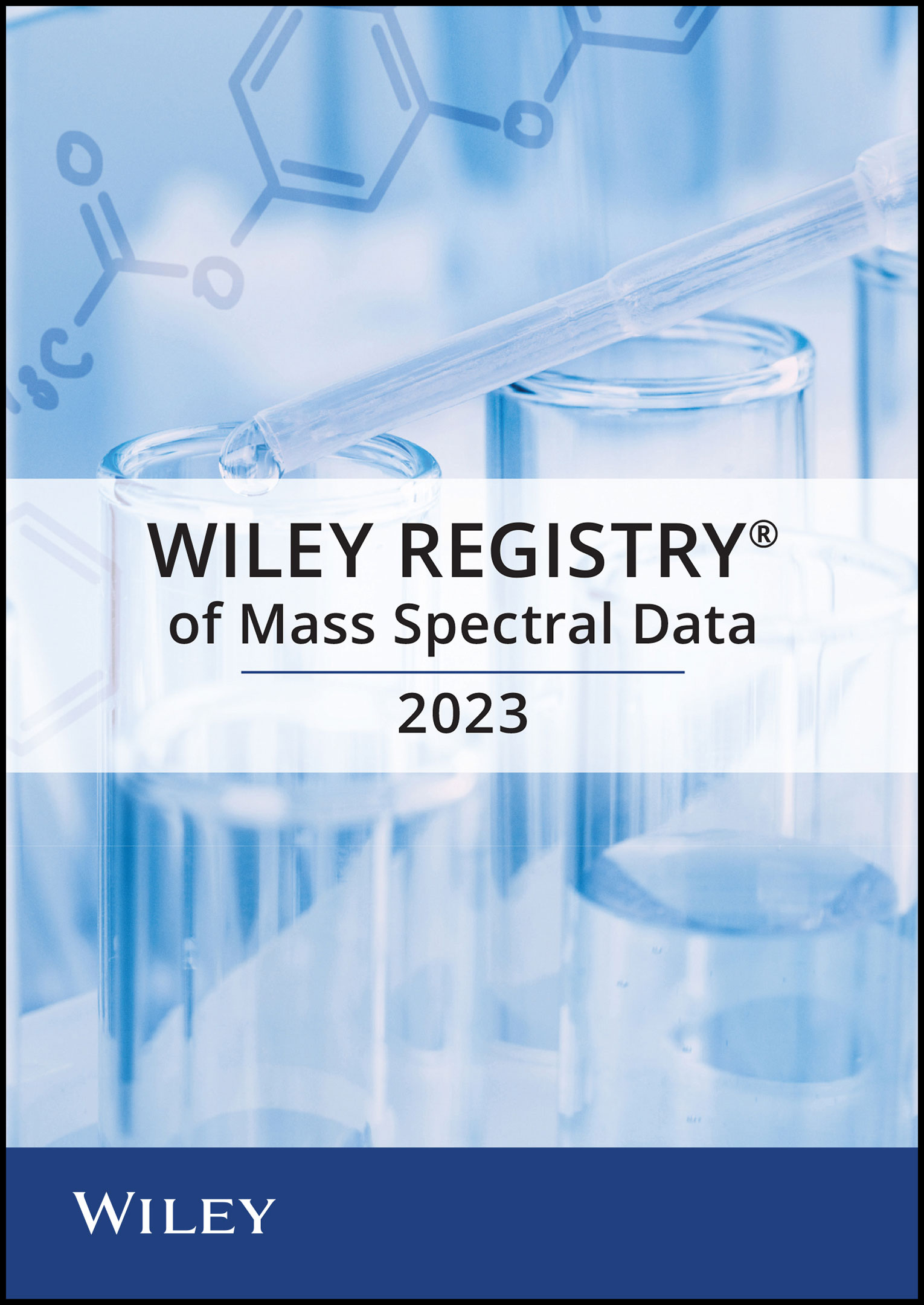Overview
From the Leader in Spectral Data
Make your lab its most efficient with the essential GC-MS library for confident spectral analyses
The field-tested and proven Wiley Registry of Mass Spectral Data continues to empower laboratories worldwide. The 2023 release of this vital MS database provides access to over 873,000 spectra* with expanded coverage to expedite your workflow even further.
Designed for use across multiple applications, from untargeted GC-MS screening to accurate mass workflows with MS-TOF instruments, this comprehensive collection helps to ensure confidence in your lab’s spectral search results, even in the most demanding applications.
A foundational tool for any laboratory engaged in GC-MS analysis, this spectral library remains a lab standard, consistently evolving to meet the ever-growing research demands of today in our continued commitment to deliver relevant, quality data.
Comprehensive compound analyses. |
Superior quality and detail. |
Seamless integration. |
|
Broad range of compounds to increase the speed and likelihood of identification for targeted and non-targeted analyses. |
Data is curated and reviewed by experts. Available metadata (properties, structure, DOI, etc.) is included. |
Vendor neutral for ease of use in your existing workflow. See supported instrument formats. |
* With a subscription you can get access to even more data as it’s added.
Now also available as a KnowItAll subscription for continued access to new data between major releases
- With a subscription, you get access to new and often critical data as it's added to the Wiley Registry.
- No need to wait for the next major release—your lab can benefit right away!
- The most recent update added 17.5K+ spectra, bringing the database to 913K+ spectra. Learn more.
Be sure to subscribe for exclusive access to the latest data.
Applications
This collection offers exceptional reliability as a comprehensive resource for the analysis, identification, classification, and verification of compounds by mass spectrometry in a wide range of applications such as:
- Environmental
- Forensics
- Toxicology
- Pharmaceuticals
- Metabolomics
- Biotech
- Food & cosmetics
- Defense & security
- Many others
Trusted data from a trusted source
Wiley is the authoritative source for spectral data. Our renowned databases are processed according to rigorous protocols to ensure they are of the highest quality. Qualification procedures start at data acquisition and continue throughout the database development process. Any data acquired from trusted partners is thoroughly vetted before inclusion in our collections.
Library Specifications
The Wiley Registry is now also available as a KnowItAll subscription for continued access to new data between major releases!
| Data Type | Number of Spectra |
|
| Wiley Registry 2023 | Wiley Registry Subscription (as of July 2025) |
|
| GCMS Spectra | 873,300 | 913,300 |
| Searchable Structures | 841,100 | 881,100 |
| Unique Compounds | 741,000 | 771,400 |
| Estimated Kovats Retention Indices | 738,400 | 772,600 |
Features
Broad range of compounds for targeted and non-targeted analyses for comprehensive analyses.
Spectral records contain additional information that’s searchable such as physical properties, structures, and DOIs when available to help narrow your results even further.
Data is carefully curated and reviewed by Wiley’s internal and external experts to ensure it meets quality standards for results you can rely on.
Spectra are segmented into separate libraries, including excess replicate spectra, to enable robust searching across varied laboratory environments. The inclusion of replicates can aid in the recall of certain compounds across different laboratory settings and instruments.
Take the guesswork out of instrument compatibility. Wiley Registry is available in the most common manufacturer formats.
What’s New in this Release?
Be sure your lab is up to date with the latest release of this evolving collection.
Take advantage of all the benefits in the 2023 release:
- Addition of over 50,000 unique compounds with over 56,000 spectra.*
- Expanded coverage of world patents and peer reviewed literature, including DOIs to source articles. Data is also sourced from partner labs.
- All spectra have been assigned a Quality Index, enabling searches to be tuned to exclude spectra below a quality index threshold.
- The Wiley Registry is now also available as a KnowItAll subscription for continued access to new data between major releases.
Compatibility
- Available in the most common instrumentation manufacturer formats. See supported vendor formats
- Also available as a KnowItAll subscription for use with Wiley’s KnowItAll software, which supports multiple instrument vendor formats
*The latest content is currently only available in the KnowItAll format.
Ordering Information
|
Product Code |
Product |
Format |
|
9781119736325 |
Wiley Registry of Mass Spectral Data 2023 |
USB |
|
978EALDB05697 |
Wiley Registry of Mass Spectral Data 2023 |
Download |
| 9781394198740 |
Wiley Registry of Mass Spectral Data 2023, Upgrade |
USB |
|
978EALDB05703 |
Wiley Registry of Mass Spectral Data 2023, Upgrade |
Download |
|
978EALDB05482 |
Wiley Registry of Mass Spectral Data (Annual Subscription) |
KnowItAll subscription |
|
978EALDB05499 |
Wiley Registry of Mass Spectral Data (Annual Subscription Renewal) |
KnowItAll subscription |
